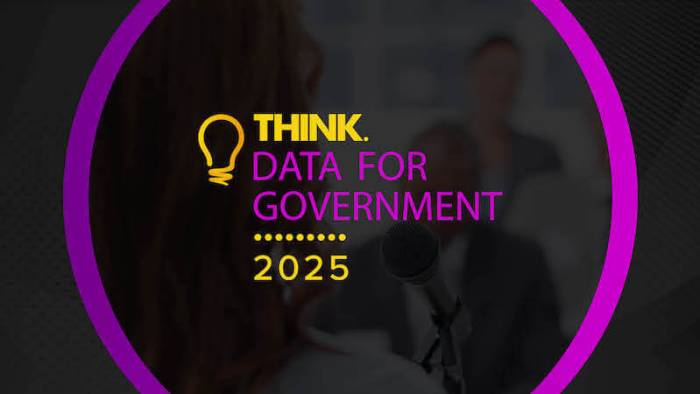Proactive IT is already helping some public sector organisations uncover significant savings, but many are still lagging behind. One major UK department, for instance, saved £1 million simply by right-sizing its hardware estate. Yet across government, the picture is less encouraging. Recent research suggests that restrictive software licensing rules alone could waste over £300 million in public funds over the next five years – not to mention the additional drain caused by software that’s paid for but rarely, if ever, used.

At the root of this inefficiency is a lack of visibility across sprawling IT estates. Without clear, real-time insights into how devices and software are being used, it’s nearly impossible to optimise resources effectively. This is where Digital Employee Experience (DEX) comes into play – it focuses on the quality of users’ interactions with workplace technology, while DEX platforms provide continuous, granular data across endpoints enabling IT teams to prevent issues, automate resolutions, and make smarter investment decisions.
By shifting to this proactive model, public sector organisations are transforming IT from a reactive support function into a strategic asset. They’re not just saving money – they’re improving operational efficiency, enhancing service delivery, and boosting civil servant productivity.
The following sections outline real-world strategies and results that demonstrate how data-led IT can deliver measurable impact across the public sector.
From fixing problems to preventing them
While the financial impact of outdated IT models is well documented, the human cost is just as significant. This research, Achievements, Aspirations and Attitudes: Measuring the Public Sector Experience, found that over 80 percent of public sector employees say IT issues hamper their productivity, and more worryingly, 1 in 10 have considered leaving their jobs because of persistent tech problems. Nearly half of respondents expressed dissatisfaction with their organisation’s digital experience.
These figures underscore a critical point: reactive IT doesn’t just waste money – it undermines morale, retention, and overall public service performance. Proactive IT changes this. With real-time data from DEX platforms, organisations can spot early warning signs like lagging devices or unused software long before they impact productivity. For instance, in other sectors, one organisation saved £7.5 million by using Lakeside Software’s SysTrack to identify which of its 7,000 laptops actually needed replacing – just 600. While another organisation revealed £3.4 million in unused software licenses, funds that could be redirected to strategic initiatives.
When extrapolated across the UK’s 6.14 million public sector workers, these kinds of data-led decisions could unlock savings in the hundreds of millions – if not more. Importantly, this shift comes at a time when the UK government is actively overhauling how digital projects are funded, aiming to simplify procurement, reduce waste, and invest in smarter technologies to improve service delivery.
And these aren’t just budget wins. These funds are being reinvested into forward-looking projects: AI pilots, smarter city infrastructure through IoT, and automation tools that reduce IT workloads while improving digital experiences for civil servants and citizens alike. In this model, proactive IT isn’t just a cost-saver, it’s an engine for innovation.
Uncovering the hidden cost of a dark estate
While the case for proactive IT is clear, one of its most powerful enablers, endpoint data, remains underutilised. Much of the public sector still operates within a “dark estate”: vast areas of the IT environment where there is little to no visibility into how devices and software are actually being used.
If you liked this content…
DEX platforms provide a new level of operational clarity. By illuminating the dark estate, real-time, role-specific insights into device performance and software utilisation are available. This empowers IT teams to right-size technology, ensuring employees have the tools they need without overspending on underused or unnecessary resources.
Crucially, DEX surfaces not just what is being used, but how it’s performing. It identifies bottlenecks, flags underperforming machines, and reveals patterns that indicate systemic issues, often before users even raise a ticket. One organisation outside of public sector, for example, spotted a CPU-intensive process quietly affecting hundreds of devices. With full visibility into its IT estate, the issue was resolved before employees experienced any disruption, saving thousands in lost productivity.
As machine learning and automation become more embedded in public sector IT strategies, the quality of data feeding these systems becomes critical. You can’t automate or optimise what you can’t see. High-frequency, high-quality endpoint data offers a reliable foundation for confident, timely decision-making, whether it’s refining refresh cycles, reallocating software spend, or enhancing the digital employee experience at scale.
Catch and fix issues before they hit productivity
Proactive IT doesn’t just identify long-term inefficiencies, it acts to protect productivity. With high-quality real-time data, public sector IT teams can catch and fix issues before they ever reach the service desk.
Unlike legacy monitoring tools that operate on lagging indicators, DEX platforms gather and analyse up to 10,000 data points every 15 seconds. This level of granularity provides an always-on view of the IT environment, allowing teams to detect subtle signs of performance degradation, such as memory spikes, CPU overloads, or network bottlenecks, before users even realise there’s a problem.
AI-powered diagnostics take this a step further, flagging anomalies and recommending resolutions instantly. Imagine, for example, a public sector organisation identifying a rogue update saturating bandwidth across 200 machines, resolving the issue before it impacts service delivery. While another organisation automates fixes to hundreds of recurring tickets per month, freeing up IT teams to focus on strategic improvements rather than firefighting.
By combining AI-driven insight with intelligent automation, proactive IT becomes a continuous loop of detection, decision, and resolution. The result is not just fewer disruptions, but faster response times, lower support volumes, and a smoother digital experience for civil servants and citizens alike.
From cost centre to catalyst for change
This isn’t just about cutting costs, it’s about turning IT into a catalyst for smarter, faster public services. With real-time data, automation, and intelligent monitoring, IT teams can move from firefighting to enabling real change.
As the UK government overhauls how digital projects are funded, there’s a clear opportunity to align IT with citizen outcomes – reducing waste, improving services, and driving greater public value. The technology is in place. The insights are there. Now it’s time to act, and make IT a strategic force for modern, efficient government.








